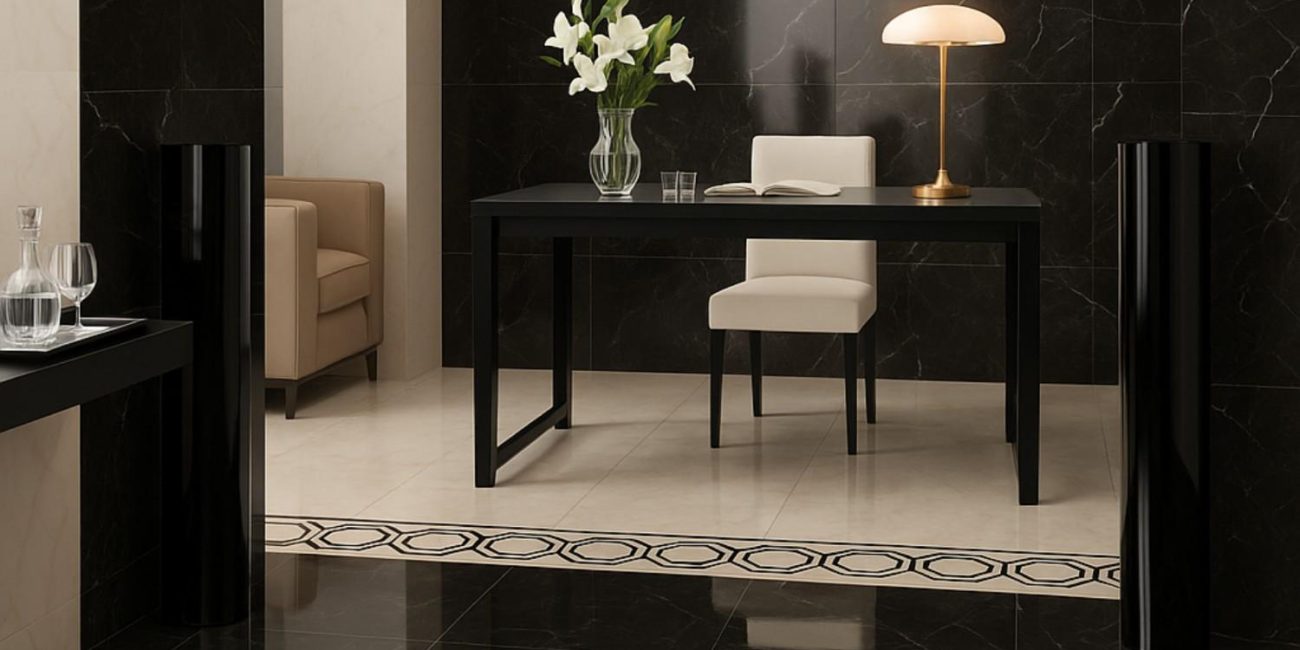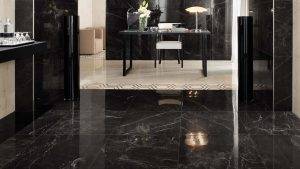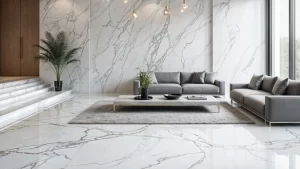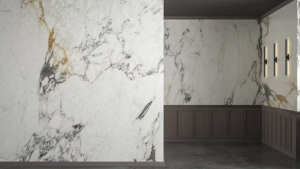Marble is one of the most elegant and timeless natural stones used in homes and commercial buildings. It is widely used for flooring, kitchen countertops, wall cladding, and other interior design features. Marble stands out because of its smooth texture, unique patterns, and natural beauty. But with growing demand, the market has seen a rise in lookalike or fake marble products that are cheaper but lack the same quality and charm.
If you are planning to buy marble, it is very important to know how to identify genuine marble from lookalikes. This not only helps you invest in a quality product but also avoids the risk of paying high for a fake. Genuine marble has unique natural features that artificial materials can’t fully replicate.
In this blog, you will learn how to identify real marble through easy tests, professional methods, and visual clues. We will also guide you on where to buy original marble and which factors matter when choosing a reliable marble supplier in the UAE or Dubai. Use this expert guide to make informed choices that bring long-term value and beauty to your space.
Why It’s Important to Choose Genuine Marble
Choosing real marble offers many long-term benefits, such as:
- It is more durable and long-lasting than artificial alternatives
- Real marble adds more value to your property
- Natural marble gives a unique and elegant look
- It saves you money in the long run by reducing repair or replacement costs
- Fake marble can lose its color, crack, or start to peel after some time.
You can avoid such problems by buying from trusted sources like a well-known marble company or a marble factory in Sharjah.
Natural Marble Characteristics: What Makes It Unique
To identify real marble, you must understand its natural features. Here is a comparison between real marble and lookalikes.
- Veins and patterns in real marble are unique and do not repeat
- Natural marble has soft, earthy, and mixed color tones
- Real marble always feels cool to the touch, even in warm weather
- It is slightly porous and absorbs water slowly
- Marble is heavier and denser than fake marble
- When polished, it gives a soft shine and not an overly glossy look
These are natural marble characteristics that set it apart from synthetic materials. You can spot these features when you visit a marble supplier in Dubai or the UAE.
Common Marble Lookalikes in the Market
Many materials in the market are made to look like marble but are not. Some of the most common ones are:
- Engineered stone such as quartz mixed with resins
- Porcelain tiles with printed marble designs
- Ceramic tiles that copy marble patterns
- Composite marble is made of crushed stone and glue
- PVC marble sheets or marble-effect laminates
These materials are cheaper and easy to maintain but do not have the natural charm, depth, or durability of real marble.
To avoid being misled, it is best to buy from a reputed marble supplier in UAE or a classic marble company that guarantees original products.
How to Identify Genuine Marble from Lookalikes
Here are some easy and practical ways to check if the marble you are buying is genuine.
Visual Inspection
- Real marble has random and natural vein patterns
- No two pieces are exactly alike
- Fake marble often has printed or repeating designs
Touch Test
- Genuine marble always feels cool, even at room temperature
- The surface is smooth but not overly slippery
Water Absorption Test
- Pour a few drops of water on the surface
- If the marble absorbs water slowly, it is real
- If the water stays on top and doesn’t soak in, the marble might be fake or covered with a seal.
Acid Test
- Put a small drop of lemon juice or vinegar on the marble surface.
- No reaction means it is either fake or coated with a protective layer
Scratch Test
- Use a steel key or coin to gently scratch the surface
- Real marble may show slight scratch marks as it is softer
- Fake marble or quartz is harder and may not scratch easily
You can try these tests on a small sample or hidden part of the stone. These simple methods will help you avoid buying fake marble products.
How to Test Marble Authenticity at Home
Here are a few safe and easy tests you can do at home before buying marble.
- Water Test: Place a few drops of water and check if it is slowly absorbed
- Scratch Test: Use a key or coin to check for slight scratches
- Acid Test: Apply a drop of vinegar and check for any bubbling
- Light Test: Use a flashlight to see the natural depth and glow of the marble
These tests are useful if you are unsure about the product shown by the supplier. For more reliable results, buy from a known marble company or marble factory in Sharjah.
Professional Marble Quality Testing Methods
For accurate results, experts use special tools to test marble quality. These include:
Mohs Hardness Test
- Checks how hard or soft the marble surface is
- Real marble scores between 3 to 4 on the Mohs scale
Porosity Test
- Measures how much water the marble can absorb
- Helps decide how often the marble needs sealing
Acid Resistance Test
- Checks how marble reacts to acidic substances
- Used to determine suitability for kitchen or bathroom use
Gloss Meter Reading
- Measures how much light reflects from the surface
- Shows the quality of the marble polish
These tests are done by specialists in a marble factory or a top marble supplier. Ask your supplier if they offer quality test reports.
Tips for Buying from a Reliable Marble Supplier
When buying marble, make sure the supplier meets the following conditions:
- They provide certificates or documents showing the marble’s origin
- They let you visit their factory or warehouse to see the marble slabs in person.
- They share real samples and perform tests in front of you
- They have positive customer reviews online or offline
- They are known as a top marble supplier or the best marble supplier in the region
- They operate a professional marble factory in Dubai or Sharjah
Choosing a trusted marble supplier in the UAE ensures that you get original, high-quality marble for your home or project.
Conclusion
Identifying real marble is not very difficult if you know what to look for. Understanding natural marble characteristics and performing basic tests can help you avoid fakes. Always check the texture, weight, porosity, and reaction to acid. Real marble may have small flaws, but that is part of its natural beauty.
To be completely sure, work with a reliable marble company, a well-known marble factory in Sharjah, or a top marble supplier in UAE. They will help you get the best product for your budget and needs.
By making informed choices, you can enjoy the lasting beauty, value, and durability of genuine marble for many years to come.
Frequently Asked Questions
What is Marble Made Of?
Marble is made of crystalline calcium carbonate (CaCO₃), primarily in the form of calcite or dolomite. It forms when limestone undergoes intense heat and pressure within the Earth’s crust, transforming into a denser and more durable material. This process is called metamorphism.
What Are 3 Interesting Facts About Marble?
- Natural Stone Origin: Marble is a metamorphic rock that comes from limestone, formed over millions of years.
- Symbol of Luxury: It has been used in iconic structures like the Taj Mahal and Michelangelo’s David, symbolizing elegance and timeless beauty.
- Color Variations: While classic marble is white, the presence of minerals like iron, mica, and graphite gives it hues of green, pink, grey, or black.
What Type of Rock is Marble?
Marble is a metamorphic rock, formed through the natural transformation of limestone under extreme heat and pressure. This makes it more compact, durable, and polished than its original sedimentary form.
What is the Raw Material of Marble?
The main raw material of marble is limestone, a sedimentary rock rich in calcium carbonate. Through a process called metamorphism, limestone turns into marble when subjected to high pressure and temperature deep beneath the Earth’s surface.
How to Tell If Marble is Real?
To check if marble is real, try these simple tests:
Cool Touch: Real marble stays cool to the touch, even at room temperature.
Acid Test: Drop a small amount of vinegar or lemon juice on the surface. Real marble will fizz or bubble due to the calcium carbonate reaction.
Scratch Test: Real marble is soft and can be scratched easily with a knife or key.
Vein Pattern: Genuine marble has natural, irregular veining, while fake marble often has a repetitive, printed pattern.






